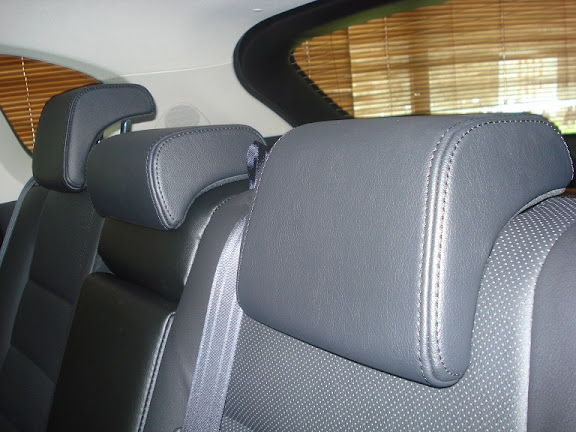Call IIHS or email them and they will verify your concerns. Also, if you look closely at the pictures the center headrest is a different design than the shorter headrests. It is thicker and projects further into the compartment than the shorter Euro versions.
IIHS tests the front driver and passenger seats and the back side seats. Those got a top rated "G" grade but it is unknown what the center seat received. From what I read the center seat was NOT tested. As mentioned in the below post. The middle headrest has to be shorter because the rear view mirror would not be usable.
http://www.iihs.org/iihs/ratings/ratings-info/rear-head-restraints-test
Foreign markets don't get tested under U.S. IIHS standards. Europe has its own safety tests and standards. IIHS tests US vehicles meant to be driven on US roads.
It's not really super complex rocket science to understand the basic physics of headrests in impacts. When rear ended does ones head snap back or does the headrest protect it from doing that? A larger headrest will protect you better than a headrest that is shorter and allows your head and neck to snap back causing injury and whiplash.
Watch a NHRA or NASCAR race and you will see how safety products are introduced to prevent the drivers head and neck from snapping back. It's called a HANS device. A taller headrest protects your head better.
It's a free country and you can remove the headrests if you wish but please don't make statements that jeopardize peoples safety. You have no clue if the shorter headrests will perform properly in an impact and only IIHS can make that verification.



